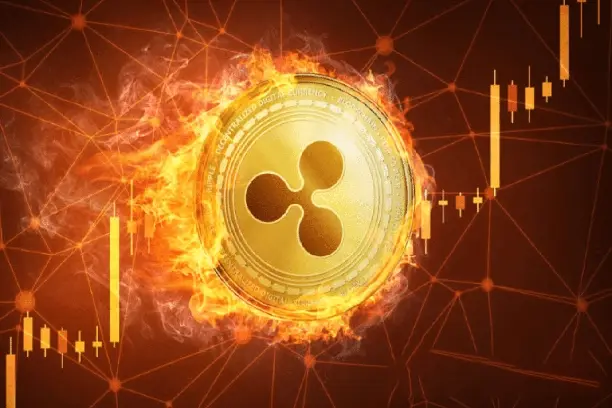As an important part of decentralized finance, DeFi lending uses blockchain technology to achieve intermediary-free, transparent and efficient lending services. Under this model, borrowers and lenders can transact directly without the involvement of traditional financial institutions. With smart contracts and cryptocurrencies as collateral, the DeFi lending platform is able to secure the funds of both parties and provide a highly liquid lending marketplace. This article will explain in detail the operating principle of DeFi lending and its lending mechanism to help users better understand this innovative financial model.

What is DeFi lending?
DeFi lending, or decentralized lending, is a financial activity conducted on the blockchain network that allows users to borrow or lend crypto assets without the involvement of a bank or financial intermediary. Through smart contracts, the DeFi lending platform automatically enforces the loan agreement, guaranteeing financial security and transparency for both parties in the transaction.
Unlike traditional lending, DeFi Lending uses blockchain technology to enable a decentralized, trustless lending system. This means that anyone can borrow and lend crypto assets globally, without geographic restrictions, and the process is more efficient and convenient. The process of borrowing and lending is usually collateralized by cryptocurrencies, and borrowers are required to provide a certain percentage of crypto assets as security in order to borrow more money.
Core mechanisms for DeFi lending and borrowing
1. The role of smart contracts
Smart contracts are the most important component of DeFi lending, which is an automated program code that runs through blockchain technology. In the DeFi lending platform, both the borrower and the lender come to an agreement through a smart contract, which automatically performs loan disbursement, repayment and collateral management.
The advantage of a smart contract is that it eliminates human intervention, reduces risk, and ensures transparency in the flow of funds. All transactions are recorded on the blockchain and can be viewed by anyone, ensuring open and transparent information.
2. Collateral mechanisms
DeFi lending platforms typically require borrowers to provide cryptocurrency as collateral. Common collateral includes mainstream crypto assets such as Bitcoin and Ether. Borrowers are required to deposit a certain amount of cryptocurrency into the platform as security for the loan.
The amount borrowed is usually part of the collateral. In order to protect the lender, the collateral provided by the borrower usually needs to be higher than the loan amount. For example, a borrower who deposits $1,000 worth of cryptocurrency may only be able to borrow $500 worth of crypto assets. This "overcollateralization" mechanism effectively reduces the risk for both borrowers and lenders.
3. Interest rates and repayment modalities
Interest rates on the DeFi lending platform are determined by market supply and demand and are not set by central banks or financial institutions. Lenders and borrowers transact on the basis of the interest rates on the platform, which usually fluctuate according to market fluctuations. Borrowers are required to repay the loan principal as well as interest on time, and late repayment may trigger the risk liquidation mechanism of the smart contract.

DeFi lending also offers flexibility in terms of repayment options, with borrowers having the option to repay the loan at any time. The platform usually sets an interest period during which the borrower can pay the interest as agreed. If the borrower pays back the loan on time, the lender will receive the interest and the borrower will be able to repossess their collateral.
Typical DeFi lending platform
There is a wide variety of DeFi lending platforms, some of which have amassed a large number of users and transactions. Below are some representative DeFi lending platforms:
- AaveAave: Aave is a well-known decentralized lending protocol that supports the lending and borrowing of a wide range of crypto-assets.One of the features of Aave is the "Lightning Loan" feature, which allows users to borrow money without collateral for arbitrage or other short-term transactions.
- Compound: Compound is another popular DeFi lending platform that allows borrowers to earn interest by providing crypto assets, while lenders can borrow assets on the platform.Compound's rates are adjusted in real time based on supply and demand in the market.
- MakerDAO: MakerDAO is an ethereum-based decentralized platform that allows users to borrow stablecoin DAI by using crypto assets such as ethereum as collateral.The core feature of MakerDAO is that it maintains the stability of DAI through a governance mechanism.
Risks and challenges
Although DeFi lending provides decentralized, transparent and efficient financial services, it also faces certain risks and challenges.
1. Smart contract vulnerabilities
Smart contracts are at the heart of DeFi's lending platform, but they can also be vulnerable or have code errors. If a smart contract is attacked or faulty, it could lead to the theft of assets from the platform or a breach of the borrowing agreement. Therefore, DeFi platforms need to strengthen the security of smart contracts and conduct regular audits.
2. Market volatility risk
The cryptocurrency market is volatile and borrowers who fail to make timely repayments may be liquidated due to a fall in the value of their collateral. Lenders may also be exposed to risks arising from market volatility. Users are therefore required to carefully assess the market risk when participating in DeFi lending.
3. Challenges of decentralized governance
The governance of DeFi lending platforms is typically decentralized, with users participating in voting decisions by holding platform tokens. Decentralized governance also poses certain challenges, particularly in terms of decision-making efficiency and platform upgrades, which may lead to delayed decision-making or unstable governance structures.
summarize
DeFi lending creates an intermediary-free, highly transparent and low-cost lending marketplace through blockchain and smart contract technology. Borrowers and lenders can trade freely, and Decentralized Finance (DeFi) provides a new solution for the liquidity of crypto assets. Despite the innovation and convenience it brings, DeFi lending still faces risks such as smart contract security and market volatility, and participants need to strengthen risk management and make careful decisions.







